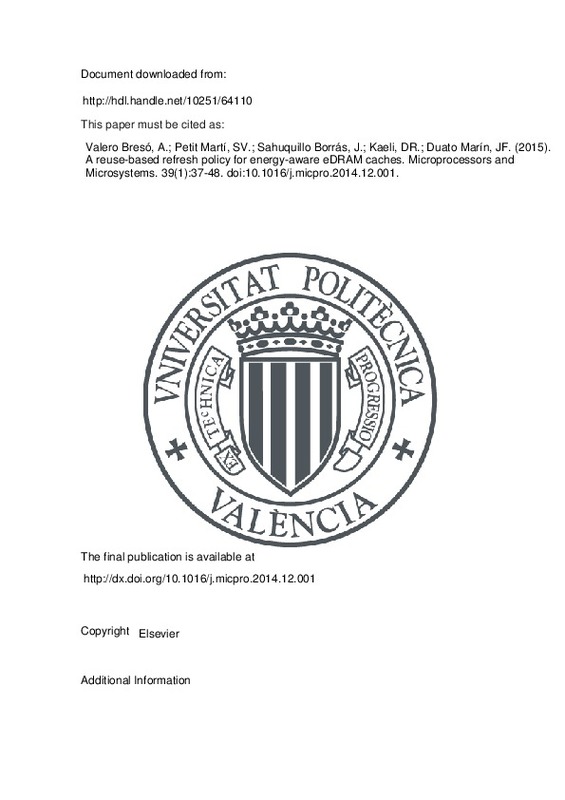JavaScript is disabled for your browser. Some features of this site may not work without it.
Buscar en RiuNet
Listar
Mi cuenta
Estadísticas
Ayuda RiuNet
Admin. UPV
A reuse-based refresh policy for energy-aware eDRAM caches
Mostrar el registro completo del ítem
Valero Bresó, A.; Petit Martí, SV.; Sahuquillo Borrás, J.; Kaeli, DR.; Duato Marín, JF. (2015). A reuse-based refresh policy for energy-aware eDRAM caches. Microprocessors and Microsystems. 39(1):37-48. https://doi.org/10.1016/j.micpro.2014.12.001
Por favor, use este identificador para citar o enlazar este ítem: http://hdl.handle.net/10251/64110
Ficheros en el ítem
Metadatos del ítem
| Título: | A reuse-based refresh policy for energy-aware eDRAM caches | |
| Autor: | Kaeli, David R. Duato Marín, José Francisco | |
| Entidad UPV: |
|
|
| Fecha difusión: |
|
|
| Resumen: |
DRAM technology requires refresh operations to be performed in order to avoid data loss due to capacitance
leakage. Refresh operations consume a significant amount of dynamic energy, which increases
with the storage ...[+]
|
|
| Palabras clave: |
|
|
| Derechos de uso: | Reserva de todos los derechos | |
| Fuente: |
|
|
| DOI: |
|
|
| Editorial: |
|
|
| Versión del editor: | http://dx.doi.org/10.1016/j.micpro.2014.12.001 | |
| Código del Proyecto: |
|
|
| Agradecimientos: |
This work was supported by the Spanish Ministerio de Economia y Competitiyidad (MINECO) and FEDER funds under Grant TIN2012-38341-C04-01. Additionally, it was also supported by the Intel Early Career Honor Programme Award ...[+]
|
|
| Tipo: |
|







![[Cerrado]](/themes/UPV/images/candado.png)


